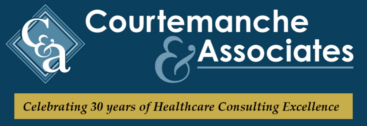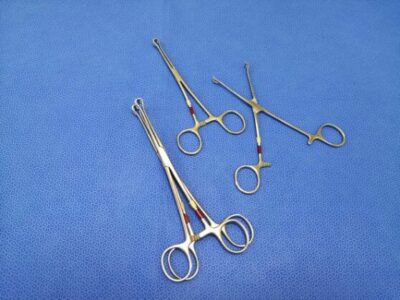The Sterile Processing Department is the glue that holds the Operating Room, invasive procedure, and procedural areas of the hospital together. They are like the stage crew for a Broadway play. If Sterile Processing is not working effectively and efficiently, many areas of the organization will not be able to function as they should. Like Broadway, the play will not go on! But unlike Broadway, patient safety can be compromised.
Two areas that accrediting and regulatory agencies are citing recently include the use of instrument identification tape and the weight of the instrument containers. First, let’s talk about instrument tape.
Instrument Identification/Marking Tape
Regulatory surveyors are heavily focused on sterile instrument safety, specifically on instrument identification methods and the proper use of identification tape. Observations with improper use of instrument identification tape have resulted in condition level findings. Improperly applied tape, tape that is peeling, splitting, cracking, or lifting creates an environment for micro-organisms such as bacteria to embed themselves into these extremely hard to reach, hard to sterilize locations. This creates an increased risk for infection by creating a safe harbor for those organisms.
Instrument identification tape, when used properly, is an easy way of identifying specific instruments for specific sets and/or surgeons. This type of marking product wears out over time. Staff need to inspect the tape each time the instrument is processed, check the tape for wear according to the IFU, and replace the tape as often as needed. Organizations should consider establishing a schedule for replacing the tape on a regular basis, regardless of the condition of the tape.
If instrument identification tape is used, it is important to in-service your staff in its correct application. The Instructions for Use for the specific tape being used must be followed, but generally, to apply instrument marking tape:
- Make sure hands are clean and free of oils and grease.
- Clean the part of the instrument where the tape will be applied with alcohol to remove any lubricant or residue.
- The tape should wrap one to one-and-a-half times around the instrument. Cut the tape at an angle, not straight across.
- After the tape is applied, steam sterilize the instruments. The heat will assist with the bonding of the tape.
- The tape is to be applied to the shanks of all instruments. Avoid instrument rings. Wrapping tape one to one-and-a-half times around will not interfere with the closing of most scissor tips.
When the tape starts to peel, split, crack or lift, all tape and adhesive residues should be completely removed, and the instrument washed before it is re-taped. A sharp object (i.e.: a knife blade) should never be used to remove tape. Not only will the instrument’s finish be damaged, which can create another safe harbor for micro-organisms, and rust build-up, but staff can be injured. Chemical tape-remover products are available.
Organizations are encouraged to do the following:
- Review their process for the use of instrument identification tape and ensure it meets regulatory requirements and that the IFU is followed.
- Ensure the Sterile Processing team is including inspection of the tape as a component of their instrument inspection.
- Conduct a risk assessment to determine if instrument identification tape is the most suitable means for instrument identification at the facility.
- Consider establishing a set schedule for the removal and replacement of the tape on all instruments.
Some organizations are moving away from the use of the instrument tape. Listed below are additional ways of identifying instrumentation:
Chemical Etching
Another acceptable process for marking instruments is chemical etching. Etching is a permanent labeling method using a process called electrolysis and may be done in your Sterile Processing Department or by a reputable repair service. Several instrument repair companies offer chemical etching machines to allow the etching of the instruments within your facility.
Etching should not be confused with engraving. The process of engraving with a machine damages the integrity of the instrument. Engraving damages the hard, protective, chromium oxide layer, and creates an area where rust and corrosion can occur. This process can also weaken the joints of the instruments, otherwise known as the box lock, and create areas where microorganisms can grow.
Color Bonding
Another method of instrument identification is to apply a color-bond to an instrument’s handle. You need to research whether the bonding is penetrable by and will withstand repeated exposure to the sterilization process that will be used and to determine how long the bonding will last. You need to know whether the bonding absorbs ethylene oxide (EO) gas and, if so, what the IFU says about the aeration requirements. Like tape, bonding must be checked for chipping or peeling after repeated cleaning and sterilization. If the bonding needs to be replaced, the instruments must be removed from service and returned to the manufacturer for re-bonding. A variety of colors are available to differentiate instruments by set, surgeon, etc.
These are the most common methods of instrument identification used in organizations. Other methods available today are silicone color bands which are autoclavable high temperature resistant and laser etching.
No matter what method you decide to use to identify instrumentation it is important to remember to refer to your IFU and replace any peeling, cracked, chipped, splitting, and lifting markers as these increase both the risk of contamination and the risk of an unintentional retained foreign object in the surgical site should the tape become dislodged from the instrument.
How Much Does That Tray Weigh?
AORN and the Association for the Advancement of Medical Instrumentation (AAMI) recommend that instrument sets and trays prepared for sterilization not exceed 25 pounds. This weight limit includes the combined weight of the pan and the instruments. Instrument sets weighing more than 25 pounds are known to be difficult to dry without lengthy drying times, increase the risk of micro-organisms survival, and present an increased risk of ergonomic injury to healthcare personnel.
The 25-pound weight limit applies to the container, instruments, and any accessories or wrappers when the container load is configured according to the manufacturer’s instructions. The 25-pound limit is used because sterilization and drying can be compromised when containers and contents are too heavy.
If a healthcare facility requests a set that is heavier than 25 pounds or chooses to exceed the weight limit, the facility is responsible for verifying that the set can be sterilized and dried. The standard recommends that facilities validate containers for use with their sterilization methods and cycles.
AORN added recommendations on paper-plastic pouches, advising the pouches should:
- be used only for small, lightweight, low-profile items like 1 or 2 clamps or scissors, not heavy items like drills or retractors because of problems such as wet packs and broken seals.
- not be used in wrapped sets or sterilization containers because the pouches cannot be positioned to assure adequate air removal, sterilant contact, drying, and have not been validated for this purpose.
Summary
In summary, there are a variety of ways to identify instrumentation for packaging. However, it is important that whatever method you use, you follow the IFU and inspect instruments before each sterilization cycle to reduce the risk of patient harm from either infection or retained objects.
Remember, all packaged instrumentation should weigh no more than 25 pounds whether it be a peel pack, container, wrap, etc. Finally, and most importantly, quality of care and safety is the top priority for patients and staff. So, with all that said, let the show begin!
References
- Chobin, N., Instrument-Marking Methods Must be Maintained Properly, Infection Control Today, December 8, 2017.
- Ipaktchi, K., Kolnik, A., Messina, M. et al. Current surgical instrument labeling techniques may increase the risk of unintentionally retained foreign objects: a hypothesis. Patient Saf Surg 7, 31 (2013). https://doi.org/10.1186/1754-9493-7-31.
- AAMI ST79 5.2.3.2 Loaned Instrumentation Policy.
- AORN Packaging Systems, Recommendation IV d.
- New Weight Limit for Instrument Sets, OR Manager, (2007).
To learn more about Sterile Processing contact the C&A team at 704-573-4535 or email us at info@courtemanche-assocs.com.


